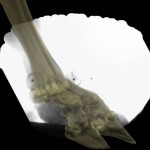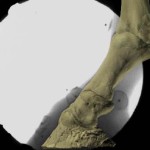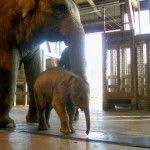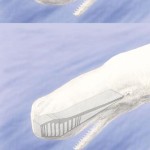3D foot kinematics using bi-planar fluoroscopy and scientific rotoscopy
This project uses bi-planar fluoroscopy (XROMM) and scientific rotoscopy to study the effect of body mass and foot anatomy on the 3D motion of all feet joints in large mammals (ranging from pigs to elephants). In collaboration with Prof. Hutchinson (The Royal Veterinary College) and Prof. Gatesy (Brown University)



